ChikoUSA put together a striking 90s style DJ booth (see header image). Even their team members were dressed in the appropriate Adidas tracksuits to match the retro excitement. The company advertised their low priced racking equipment. Pricing for ChikoUSA’s systems has dropped well below 10¢/Wdc.
Mechatron Solar was also on display – their gear was a remarkable sight. The M18KD is a gearless Dual-Axis Tracker. Mechatron suggests that the unit produces up to 40% more generation from always facing the sun. The unit has 1,800 square feet of surface area to place modules and the manufacturers suggest that up to 40 kW can be deployed per unit.
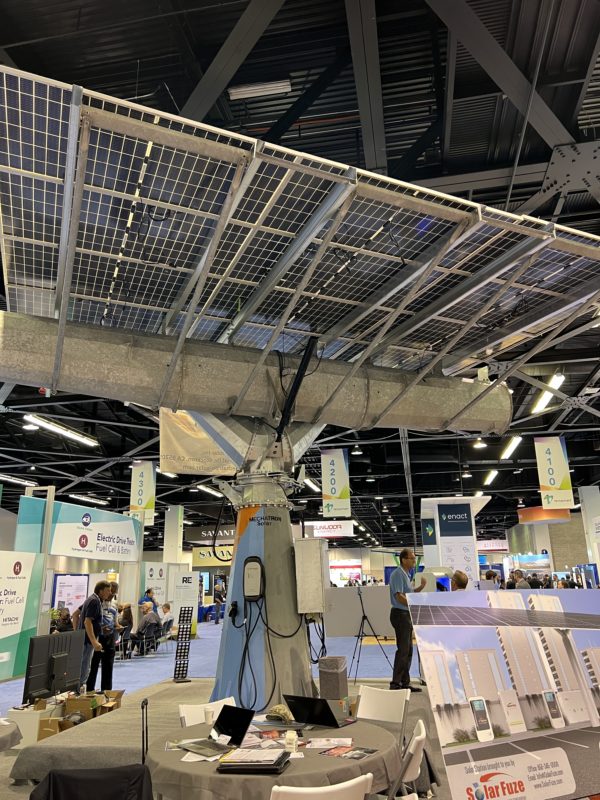
This author asked questions about the O&M requirements, the longevity of the units in the field, and the long-term viability of the company. Mechatron suggested that there is no need for O&M, due to the purely hydraulic system that moves the tracker on its two axes. They backed up these claims with data that showed off their trackers’ uptime – over 99%.
Mechatron directed us to their website, where a document from Black & Veatch specifically examined the viability of the company, and its 200 MW/year (~5,000 units/year) manufacturing facility in California.
It’s genuinely cool that here in the 21st century, with our 2 nanometer computer chips, vertically landing rockets, and budding quantum computers, that our favorite, advanced form of electricity generation is being guided by a bag of air. This brilliant design came from a NASA roboticist at Sunfolding.
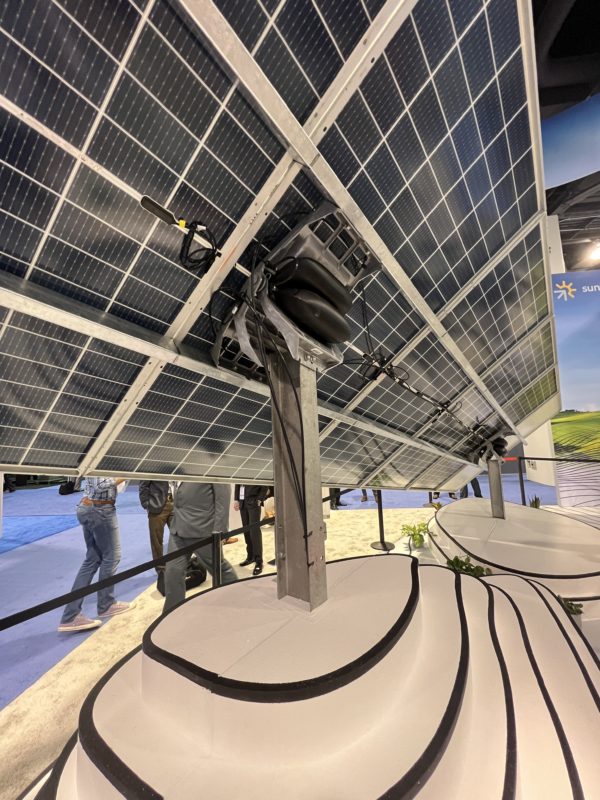
Due to the air-based distributed actuation, rows can be any length, even as short as two posts. This small size per batch means that they can be installed on uneven terrain, on grades as high as 15-20%, significantly lowering the costs of civil work.
As in previous years, APA Solar had their giant ground screws on display. The group also brought their A Frame unit. We talked about projects in the northeast USA, and about their ground screws, which are regularly used in locations where pile driving is unable to achieve sufficient foundational grip.
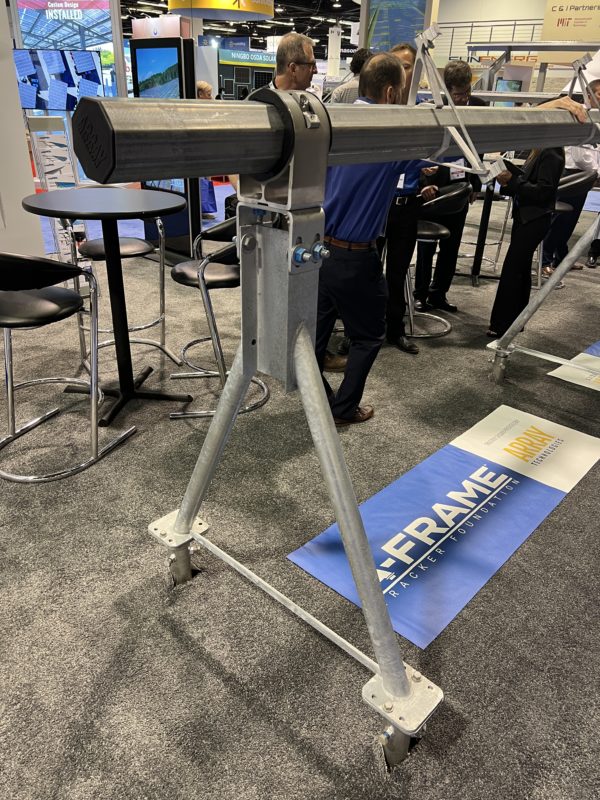
APA Solar’s Melanie Garza also mentioned that the A Frame is currently evolving, as the company gets more experienced in hardware deployment. The market should expect an announcement about their platform soon.
Speaking of putting steel in the ground, Gayk’s HRE 4000-W pile driving system was on display. Salesmen at the booth suggested that this unit, along with its smaller and larger siblings (the 3000 and the 5000), and their predecessors, have the highest deployment of all pile drivers used in the solar industry, globally.
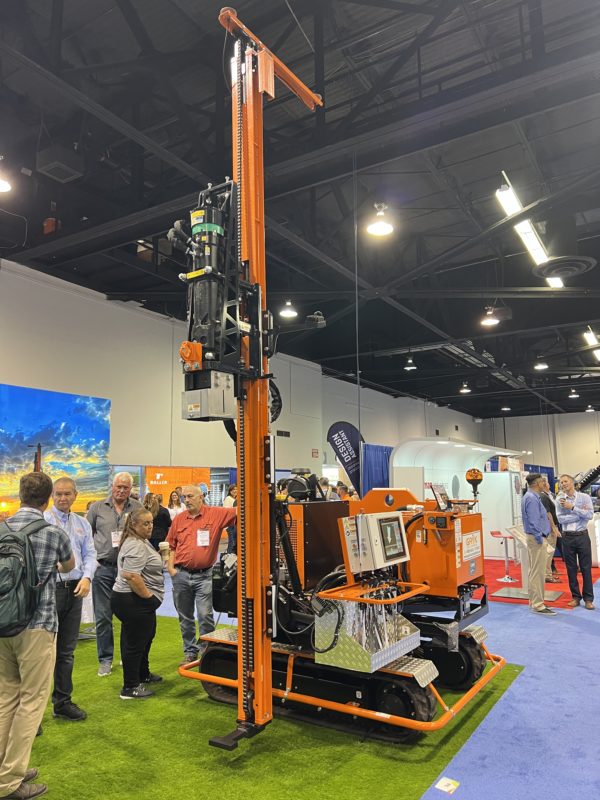
Next we transitioned from the largest items on the floor to the smallest of racking components – the Vespr Solar module attachment clip (see Justin Souza’s business card below). The manufacturer suggests that these clips will lower the cost of a solar power project’s labor requirements by 0.5¢/Wdc. This is an enormous savings, considering the diminutive size of the clip!

Another major benefit of the clip is that it is self correcting. If the solar modules vibrate in a wind event, the clip simply moves with the modules – always repositioning itself into a holding position. This is in contrast to nuts and bolts, which must be repeatedly spot checked and torqued – not only during construction, but also many times over the course of the project’s life (and especially after strong wind events).
Vespr has validated the clips’ static and dynamic mechanical performance, and demonstrated their effectiveness via sites they deployed in upstate New York.
This content is protected by copyright and may not be reused. If you want to cooperate with us and would like to reuse some of our content, please contact: editors@pv-magazine.com.
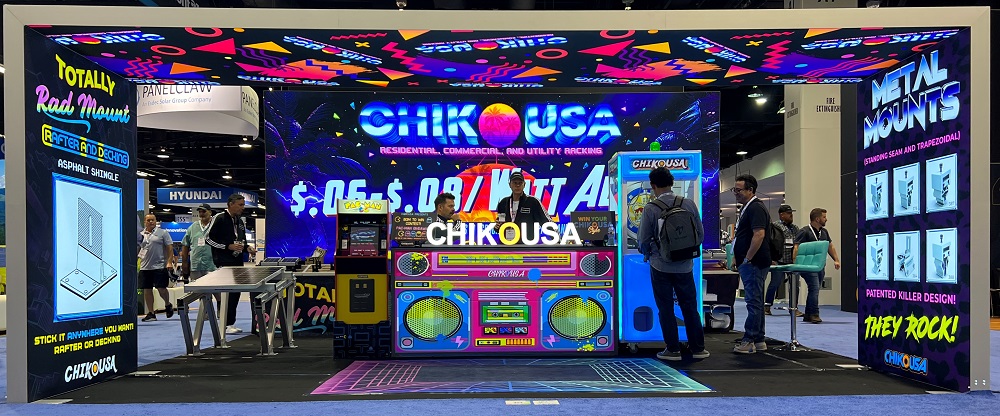







By submitting this form you agree to pv magazine using your data for the purposes of publishing your comment.
Your personal data will only be disclosed or otherwise transmitted to third parties for the purposes of spam filtering or if this is necessary for technical maintenance of the website. Any other transfer to third parties will not take place unless this is justified on the basis of applicable data protection regulations or if pv magazine is legally obliged to do so.
You may revoke this consent at any time with effect for the future, in which case your personal data will be deleted immediately. Otherwise, your data will be deleted if pv magazine has processed your request or the purpose of data storage is fulfilled.
Further information on data privacy can be found in our Data Protection Policy.